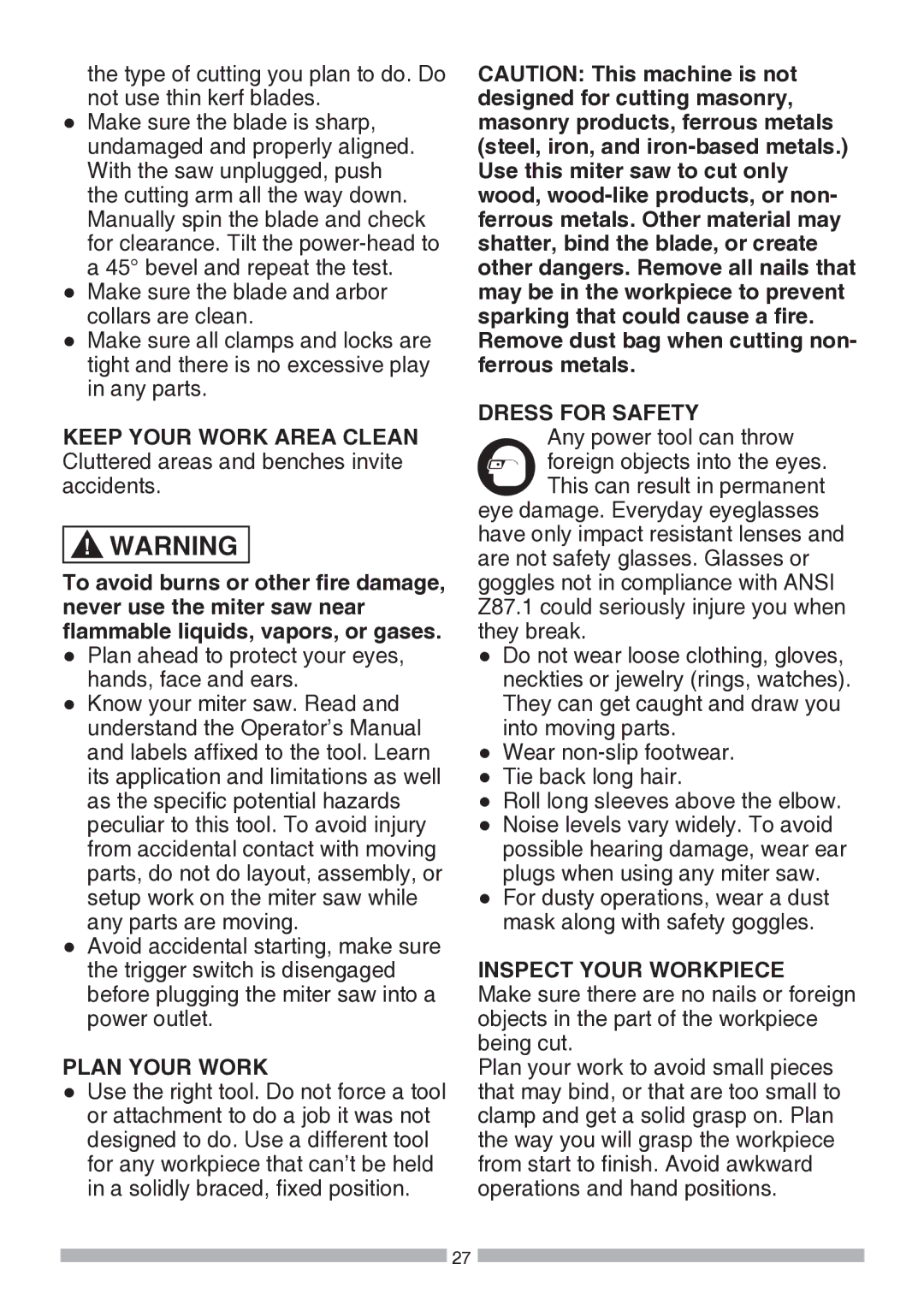
the type of cutting you plan to do. Do not use thin kerf blades.
●Make sure the blade is sharp, undamaged and properly aligned. With the saw unplugged, push the cutting arm all the way down. Manually spin the blade and check for clearance. Tilt the
●Make sure the blade and arbor collars are clean.
●Make sure all clamps and locks are tight and there is no excessive play in any parts.
KEEP YOUR WORK AREA CLEAN Cluttered areas and benches invite accidents.
!WARNING
To avoid burns or other fire damage, never use the miter saw near flammable liquids, vapors, or gases.
●Plan ahead to protect your eyes, hands, face and ears.
●Know your miter saw. Read and understand the Operator’s Manual and labels affixed to the tool. Learn its application and limitations as well as the specific potential hazards peculiar to this tool. To avoid injury from accidental contact with moving parts, do not do layout, assembly, or setup work on the miter saw while any parts are moving.
●Avoid accidental starting, make sure the trigger switch is disengaged before plugging the miter saw into a power outlet.
PLAN YOUR WORK
●Use the right tool. Do not force a tool or attachment to do a job it was not designed to do. Use a different tool for any workpiece that can’t be held in a solidly braced, fixed position.
CAUTION: This machine is not designed for cutting masonry, masonry products, ferrous metals (steel, iron, and
DRESS FOR SAFETY
Any power tool can throw foreign objects into the eyes.
This can result in permanent eye damage. Everyday eyeglasses have only impact resistant lenses and are not safety glasses. Glasses or goggles not in compliance with ANSI Z87.1 could seriously injure you when they break.
●Do not wear loose clothing, gloves, neckties or jewelry (rings, watches). They can get caught and draw you into moving parts.
●Wear
●Tie back long hair.
●Roll long sleeves above the elbow.
●Noise levels vary widely. To avoid possible hearing damage, wear ear plugs when using any miter saw.
●For dusty operations, wear a dust mask along with safety goggles.
INSPECT YOUR WORKPIECE
Make sure there are no nails or foreign objects in the part of the workpiece being cut.
Plan your work to avoid small pieces that may bind, or that are too small to clamp and get a solid grasp on. Plan the way you will grasp the workpiece from start to finish. Avoid awkward operations and hand positions.
![]() 27
27 ![]()
